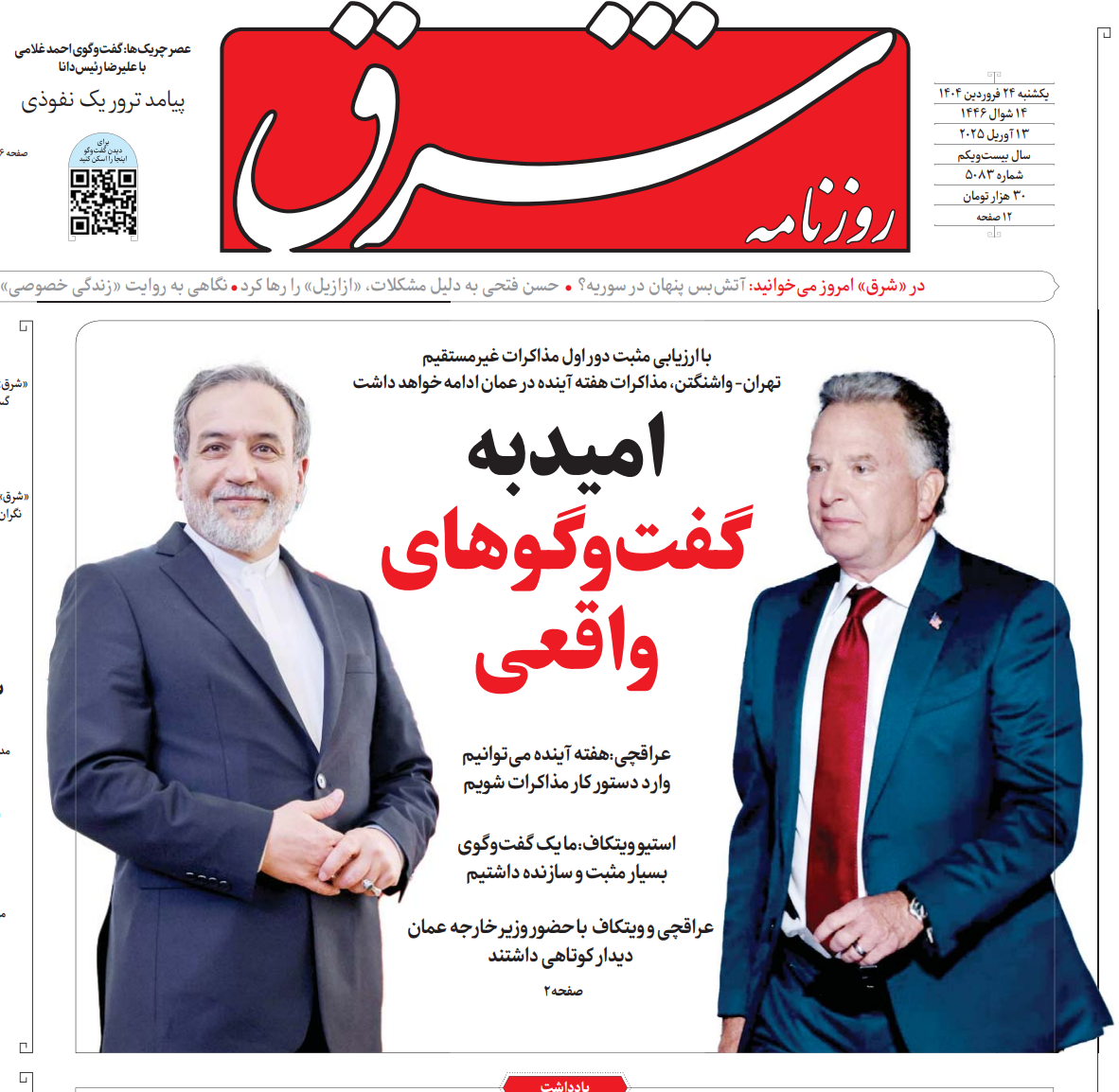Where Do Iran Nuclear Talks Stand?
Hwang Yuihyun (SNUAC)
The nuclear negotiations between the United States and Iran, which began in April, appear to be progressing smoothly so far. On April 12, the two delegations—led by Steve Witkoff, U.S. Special Envoy to the Middle East, and Abbas Araghchi, Iran’s Foreign Minister—held their first round of talks in Muscat, Oman. The meeting was conducted indirectly through the mediation of Oman’s Foreign Minister. A second meeting took place in Rome, Italy, on April 19. The two sides have agreed to meet again in Muscat for a third round on April 26.
So far, the signs have been positive. The U.S. side stated that the negotiations were very productive and showed progress. Minister Araghchi also mentioned that the talks had achieved some agreements on key principles and objectives. Although President Donald Trump previously warned that he would not rule out war if the talks failed, The New York Times reported that he rejected Israel’s proposal to strike Iranian nuclear facilities. On April 16, Trump also said that he prioritizes diplomatic solutions.
However, doubts remain over whether the two sides can reach a consensus on the core issues dividing them. One such issue is Iran’s uranium enrichment. On April 17, Envoy Witkoff declared that the U.S. cannot allow Iran to continue enriching uranium. In response, Minister Araghchi stated that uranium enrichment is not up for negotiation and can never be given up. Iran has said that a deal is possible as long as the U.S. does not make unrealistic demands. But if what Iran sees as “unrealistic” is precisely what the U.S. hopes to achieve through negotiations, then the chances of a successful agreement remain slim.
Within the U.S. administration, views on the Iran talks are reportedly divided. Secretary of State Marco Rubio and National Security Advisor Mike Waltz are opposed to the negotiations, while Vice President JD Vance and Secretary of Defense Pete Hegseth believe that the risks of military action are too great and that diplomacy should be prioritized. President Trump’s stance remains ambiguous: while at times he has threatened war, he has also expressed support for diplomatic resolutions. Ultimately, the direction of the Iran nuclear talks depends on how seriously the U.S. defines and pursues its objectives.
이란 핵 협상, 어디까지 왔나?
황의현 (아시아연구소)
4월 시작된 미국과 이란의 핵 협상이 현재까지는 순탄히 진행되는 모양새다. 4월 12일 스티브 위트코프(Steve Witkoff) 미국 중동특사와 압바스 아락치(Abbas Araghchi) 이란 외무부 장관이 이끄는 양국 대표단은 오만 무스카트에서 직접 만나지 않고 오만 외무부 장관이 중개하는 방식을 통해 1차 회담을 가졌으며, 4월 19일에는 이탈리아 로마에서 두 번째로 만났다. 양측은 4월 26일에 다시 무스카트에서 3차 회담을 열기로 했다.
현재까지 나타난 신호는 긍정적이다. 미국 측은 협상이 매우 좋았고 진전이 있었다고 밝혔으며, 아락치 장관 역시 일부 원칙과 목적에서 합의를 달성하는 등의 성과를 거두었다고 언급했다. 트럼프 미국 대통령 또한 이번 협상이 타결되지 않으면 전쟁도 불사하겠다고 위협했지만, 뉴욕타임즈에 따르면 트럼프 대통령은 이란의 핵 시설을 공격하자는 이스라엘의 제안을 거부한 것으로 알려졌으며, 4월 16일에는 외교적 해법을 우선시하고 있다고 말하기도 했다.
그러나 과연 양측이 대립하는 핵심 쟁점에 대해 합의에 도달할지에 대한 의문은 남아 있다. 이란의 우라늄 농축이 그러한 쟁점 중 하나다. 4월 17일 위트코프 특사가 이란의 우라늄 농축을 허용할 수 없다고 밝히자, 아락치 장관은 우라늄 농축은 협상 대상이 아니며 결코 포기할 수 없다고 대응했다. 이란은 미국이 비현실적인 요구를 하지 않는다면 협상 타결이 가능하다는 입장이지만, 이란이 보기에 ‘비현실적인 요구’가 미국이 협상을 통해 얻고자 하는 목적이라면 실제 협상 타결 가능성은 낮을 수밖에 없다.
이란과의 협상에 대해 미국 행정부 고위 인사들의 입장은 엇갈리는 것으로 알려졌다. 마르코 루비오(Marco Rubio) 국무부 장관과 마이크 왈츠(Mike Waltz) 국가안보보좌관은 협상에 부정적인 반면, 밴스(JD Vance) 부통령과 피터 해그세스(Pete Hegseth) 국방부 장관은 무력 행사의 위험 부담이 지나치게 크며 외교적 해법이 우선시되어야 한다는 입장이다. 트럼프 대통령의 입장은 모호하다. 한편으로는 전쟁을 위협하는 반면 다른 한편으로는 외교적 해법을 지지하기도 했다. 결국 이란 핵 협상의 향방은 미국이 진지하게 무엇을 요구하느냐에 따라 달려 있다.

